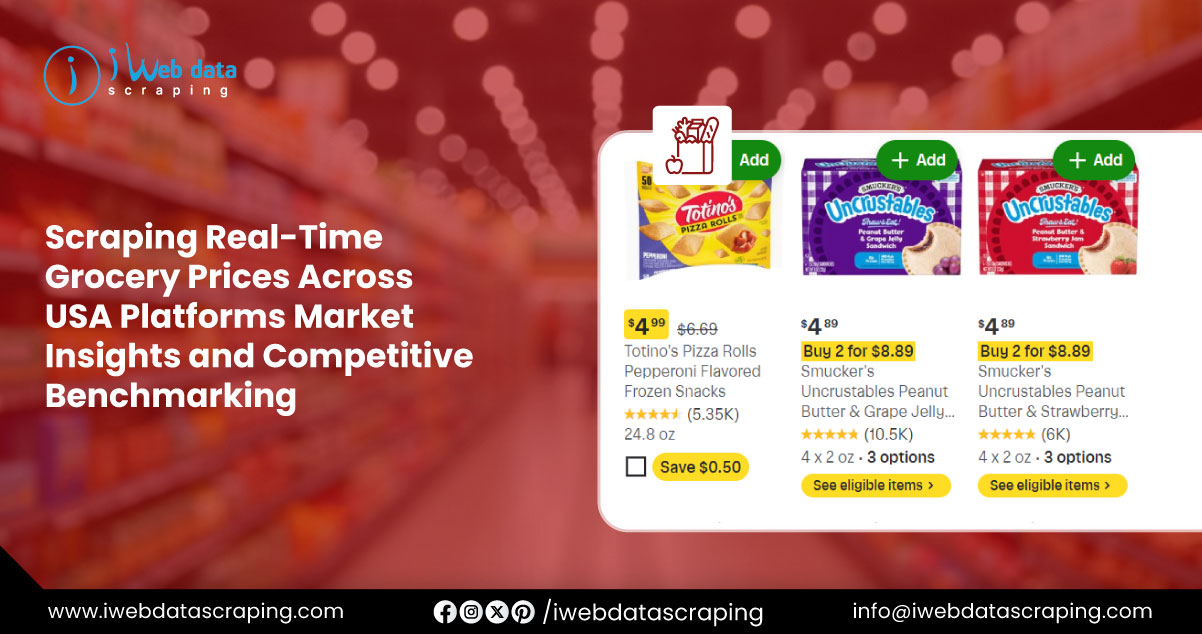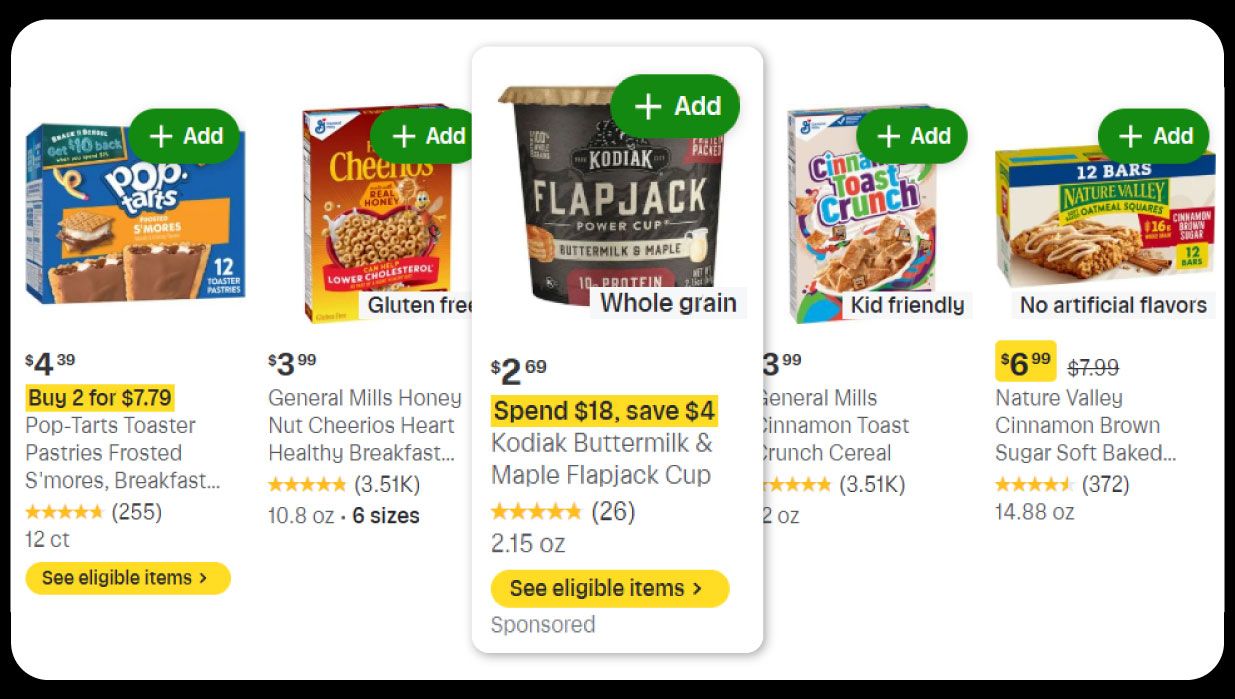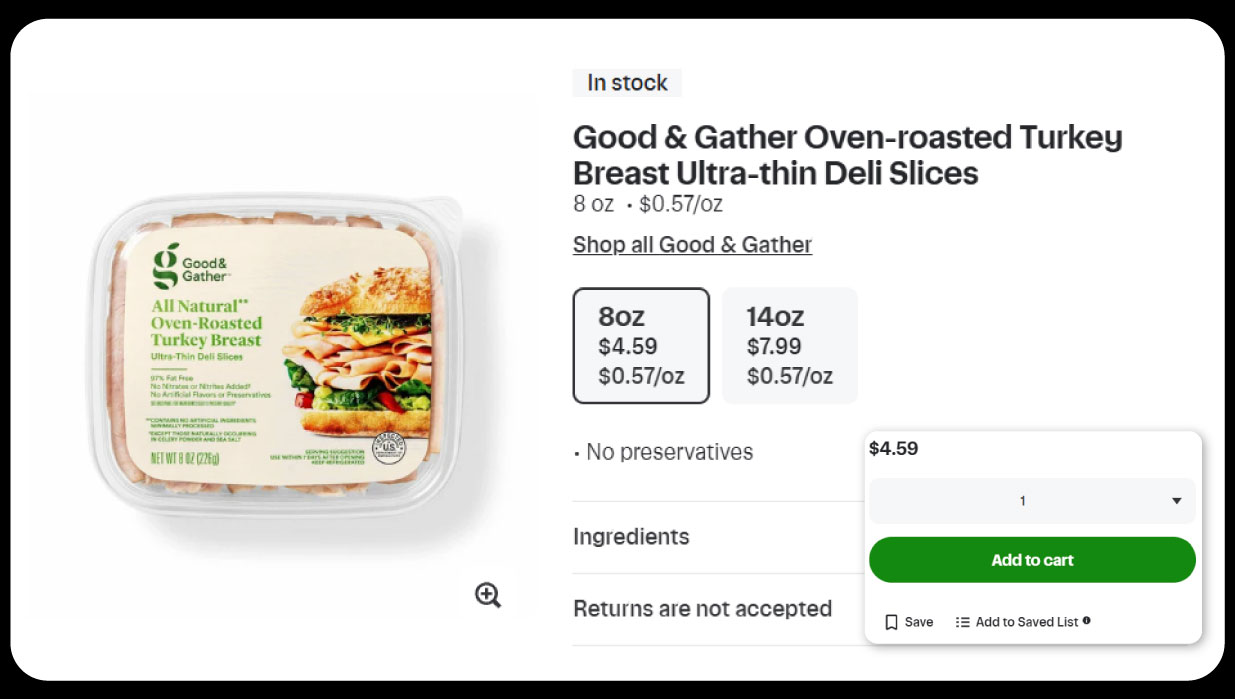

The U.S. online grocery sector is expanding rapidly, with Instacart, Walmart, and Amazon Fresh leading the race to deliver convenience, variety, and affordability. As more households embrace digital grocery shopping, comparing costs across these platforms becomes crucial for smarter purchasing decisions and competitive benchmarking. This research utilizes Scraping Real-Time Grocery Prices Across USA Platforms to uncover trends shaping consumer choices and retailer strategies. Extract Grocery Prices from Instacart, Walmart & Amazon to highlights variations in product pricing, delivery charges, and service efficiency. Leveraging Web Scraping Grocery Data for Competitor Price Analysis, we provide deeper insights into how each platform positions itself in the marketplace. The goal is to equip consumers with the knowledge to identify cost-effective options while enabling businesses to refine their strategies in the dynamic U.S. grocery delivery landscape. Ultimately, this analysis reveals the opportunities and challenges driving competition in the online grocery ecosystem.

To compare prices across Instacart, Walmart, and Amazon Fresh, we collected data on 30 common grocery items across five categories: produce, dairy, pantry staples, snacks, and meat. These items represent a typical shopping basket for an average U.S. household. Prices were gathered in August 2025 from three major cities—New York, NY; Los Angeles, CA; and Chicago, IL—to account for regional variations. Scrape Grocery Platforms for Real-Time Price Tracking to ensure the data was current and accurate, sourced directly from each platform’s website or app.
The data collection process involved:
To ensure consistency, prices were normalized for differences in package sizes and brands. Delivery and service fees were included in total cost calculations, and membership benefits (e.g., Instacart Express, Walmart+, Amazon Prime) were considered. The analysis also incorporated consumer feedback and market share data from recent studies to provide context on service quality and platform popularity.
Platform Overview
Using Grocery Price Comparison via Data Scraping USA, we compared prices for a basket of 30 identical or comparable items across the three platforms. The table below shows the average price per item by category, excluding delivery and service fees for a standardized comparison.
Table 1: Average Price per Item by Category (August 2025)
| Category | Instacart | Walmart | Amazon Fresh |
|---|---|---|---|
| Produce | $3.50 | $2.95 | $3.15 |
| Dairy | $4.25 | $3.80 | $3.95 |
| Pantry Staples | $2.85 | $2.55 | $2.65 |
| Snacks | $4.00 | $3.55 | $3.35 |
| Meat | $7.60 | $6.85 | $7.25 |
| Total Basket | $98.00 | $87.75 | $91.00 |
Delivery and service fees significantly affect the total cost of online grocery shopping. The table below compares the total cost of a $90 basket (before fees) across the platforms, including delivery and service fees, assuming no membership for Instacart or Walmart and an Amazon Prime membership for Amazon Fresh.
Table 2: Total Cost for a $90 Basket with Fees (August 2025)
| Platform | Basket Cost | Delivery Fee | Service Fee | Total Cost |
|---|---|---|---|---|
| Instacart | $90.00 | $7.99 | $4.50 | $102.49 |
| Walmart | $90.00 | $9.95 | $0.00 | $99.95 |
| Amazon Fresh | $90.00 | $6.95 | $0.00 | $96.95 |
Price differences across cities were analyzed to account for geographic factors. In New York, Instacart’s prices were 15% higher than Walmart’s due to elevated retailer markups and fees. In Los Angeles, Walmart maintained the lowest prices, while Amazon Fresh was competitive for packaged goods. Chicago showed similar trends, with Walmart leading in affordability and Instacart consistently higher due to store-specific pricing. These findings highlight the importance of localized pricing strategies in the grocery market.

Price is not the only factor influencing consumer choice. Each platform offers unique features:
For budget-conscious shoppers, Walmart is the most cost-effective option due to its low prices and minimal fees for pickup. Amazon Fresh offers strong value for Prime members, particularly for those prioritizing convenience and speed. Instacart, while more expensive, provides unmatched store selection, making it suitable for consumers seeking specific brands or specialty items. Market data indicates Walmart holds a 48% share of grocery delivery sales, followed by Instacart at 45%, reflecting their dominance in the market.
This analysis reveals that Walmart offers the lowest prices for online grocery shopping, followed by Amazon Fresh, with Instacart being the most expensive due to fees and markups. Grocery and Supermarket Store Datasets show that consumers can save 10–15% by choosing Walmart or Amazon Fresh over Instacart, though the latter’s flexibility may appeal to some. Grocery Pricing Data Intelligence Services suggest that regular price comparisons are essential, as promotions and regional pricing can shift cost dynamics. Price Comparison Services empower consumers to make informed choices, balancing price, convenience, and variety. Future research could explore dynamic pricing trends and the impact of loyalty programs to further enhance understanding of the online grocery market.
Experience top-notch web scraping service and mobile app scraping solutions with iWeb Data Scraping. Our skilled team excels in extracting various data sets, including retail store locations and beyond. Connect with us today to learn how our customized services can address your unique project needs, delivering the highest efficiency and dependability for all your data requirements.
We start by signing a Non-Disclosure Agreement (NDA) to protect your ideas.
Our team will analyze your needs to understand what you want.
You'll get a clear and detailed project outline showing how we'll work together.
We'll take care of the project, allowing you to focus on growing your business.